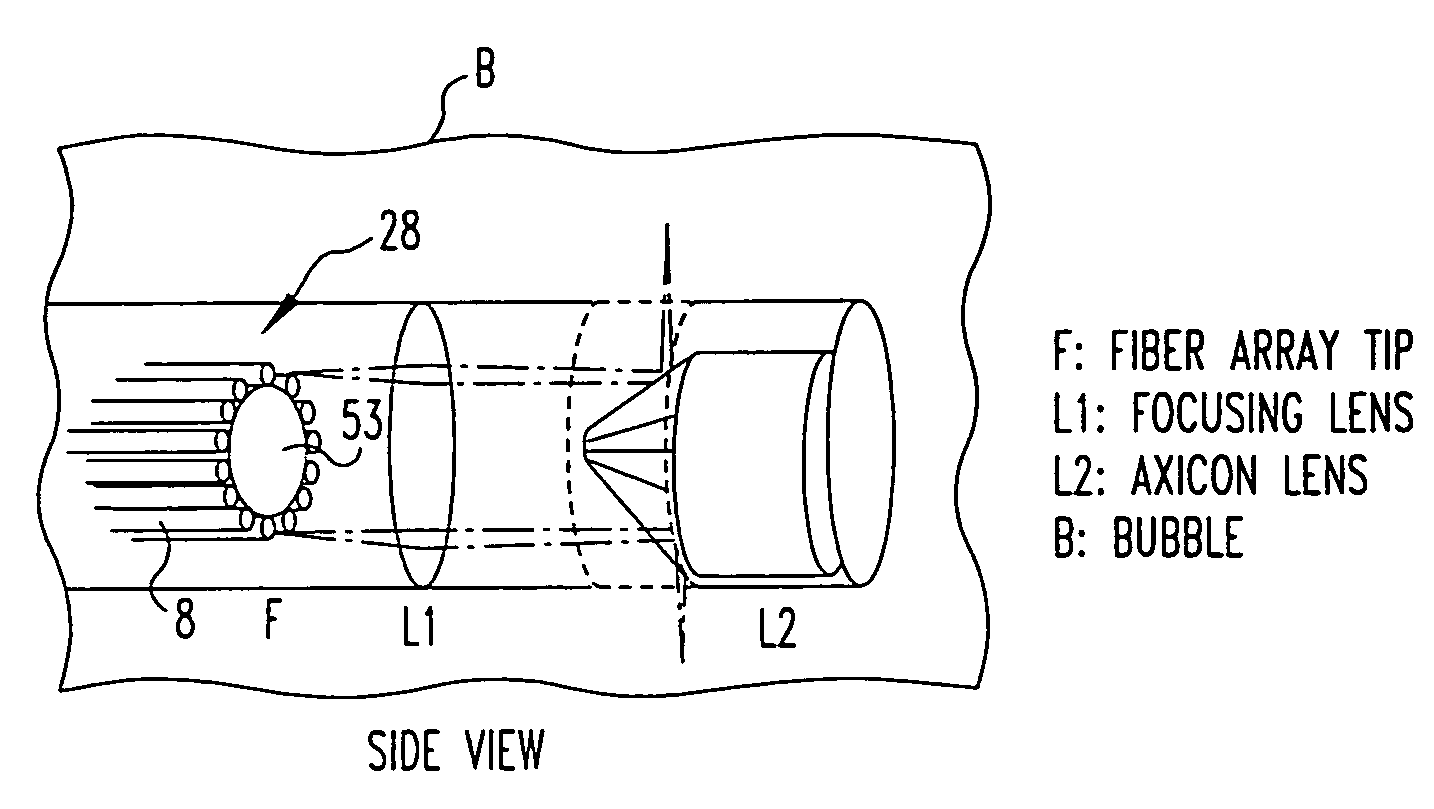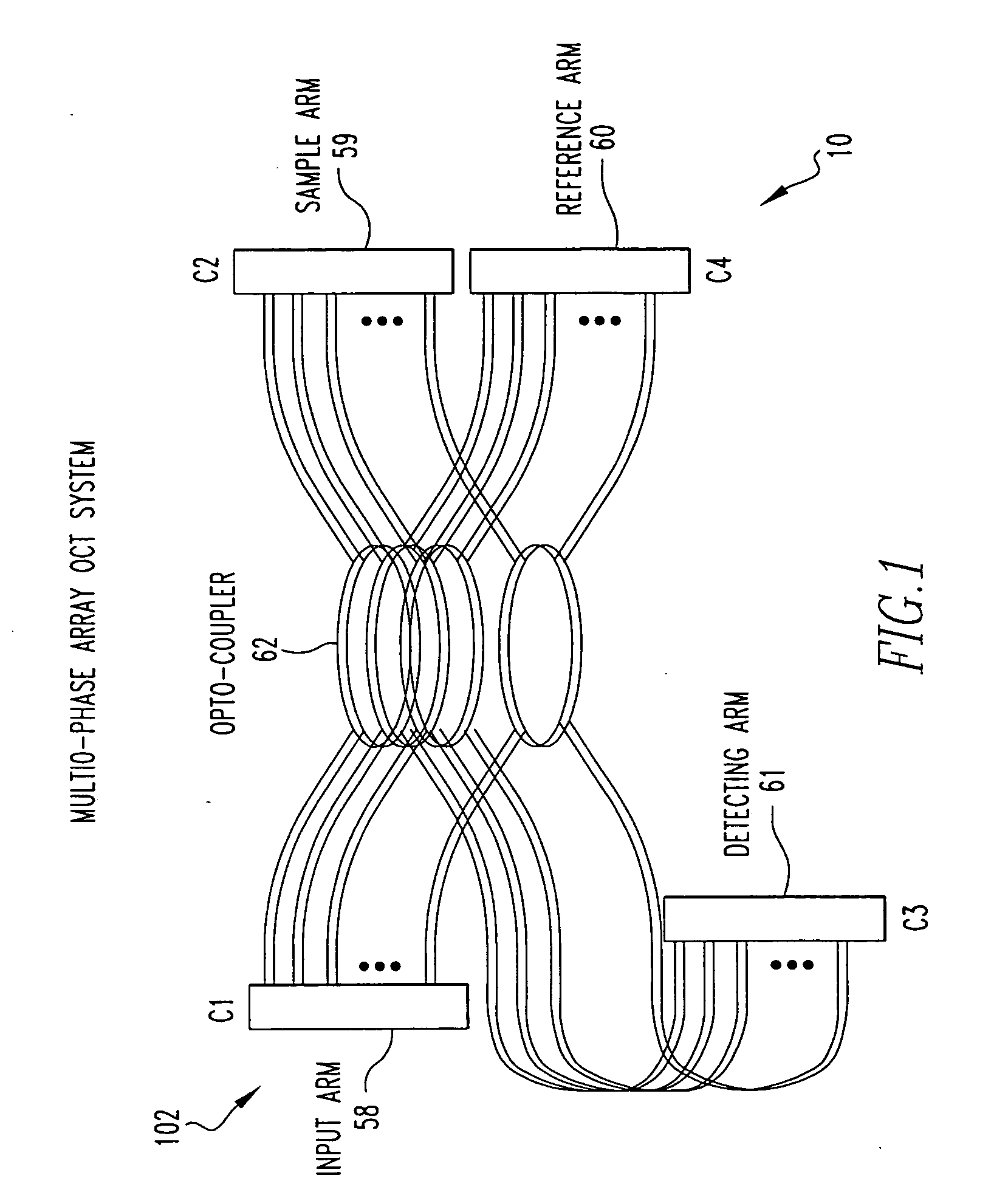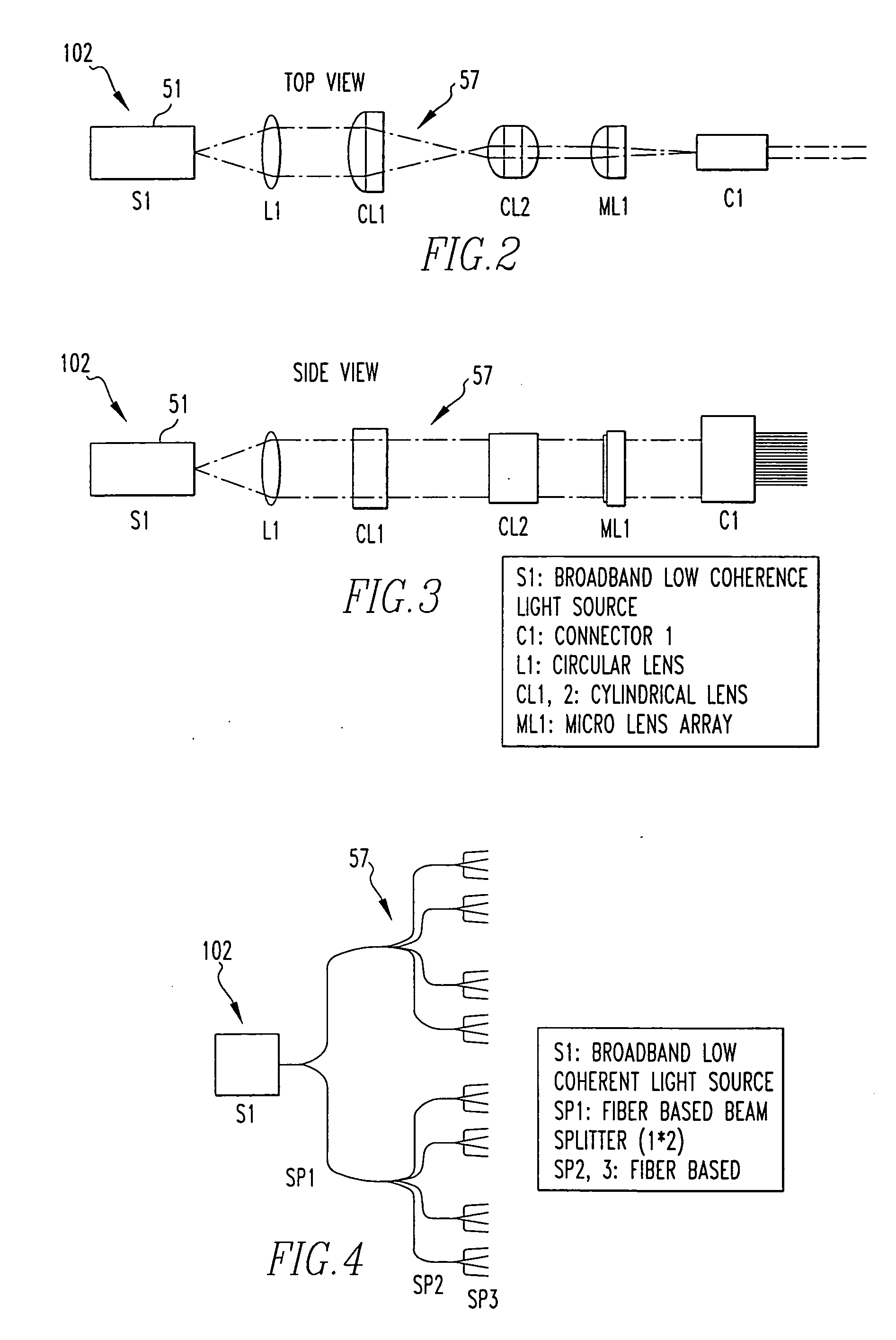OCT using spectrally resolved bandwidth
a technology of optical coherence and bandwidth, applied in the field of optical coherence tomographic imaging, can solve the problems of myocardial infarction, prone to rupture, no methods are currently available to the cardiologist,
- Summary
- Abstract
- Description
- Claims
- Application Information
AI Technical Summary
Problems solved by technology
Method used
Image
Examples
Embodiment Construction
[0059] Referring now to the drawings wherein like reference numerals refer to similar or identical parts throughout the several views, and more specifically to FIGS. 1-5, 15 and 16 thereof, there is shown an endoscope 10 for a patient. The endoscope 10 comprises means 102 for producing light, such as a light source 51. The endoscope 10 comprises an optical fiber array 28 comprising a plurality of optical fibers 8 adapted to be disposed in the patient. The optical fiber array 28 transmits the light from the producing means, preferably including a light source 51, into the patient, and transmits the light reflected by the patient out of the patient. The plurality of the optical fibers 8 of the array 28 is in optical communication with the light producing means 102. The endoscope 10 comprises a detector D for receiving the light from the array 28 and analyzing the light. The plurality of the optical fibers 8 of the array 28 is in optical communication with the detector D.
[0060] Prefer...
PUM
 Login to View More
Login to View More Abstract
Description
Claims
Application Information
 Login to View More
Login to View More - R&D
- Intellectual Property
- Life Sciences
- Materials
- Tech Scout
- Unparalleled Data Quality
- Higher Quality Content
- 60% Fewer Hallucinations
Browse by: Latest US Patents, China's latest patents, Technical Efficacy Thesaurus, Application Domain, Technology Topic, Popular Technical Reports.
© 2025 PatSnap. All rights reserved.Legal|Privacy policy|Modern Slavery Act Transparency Statement|Sitemap|About US| Contact US: help@patsnap.com



